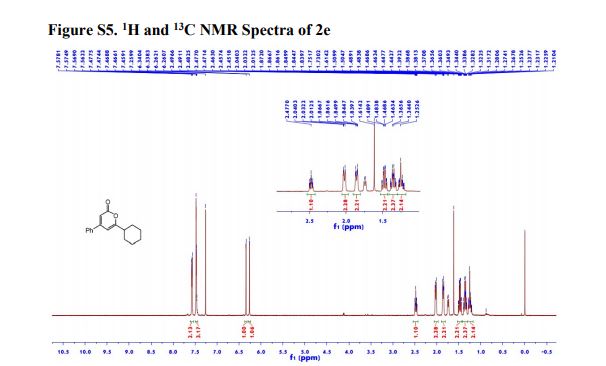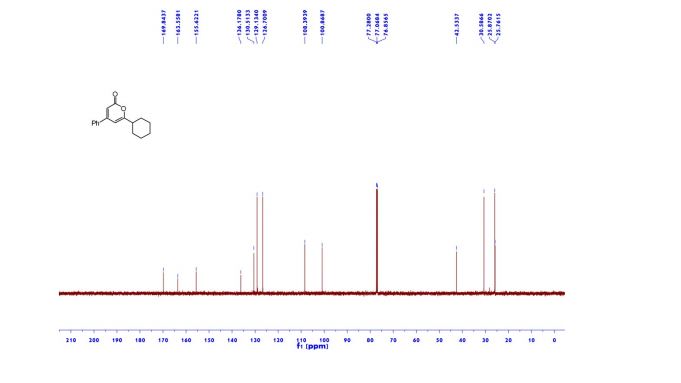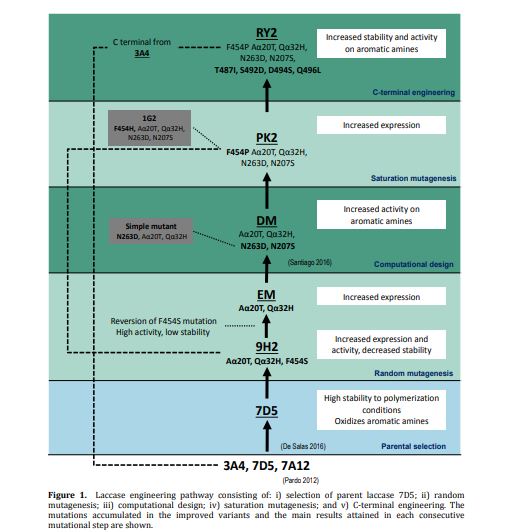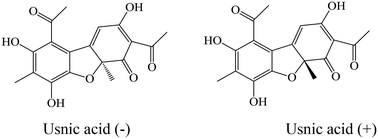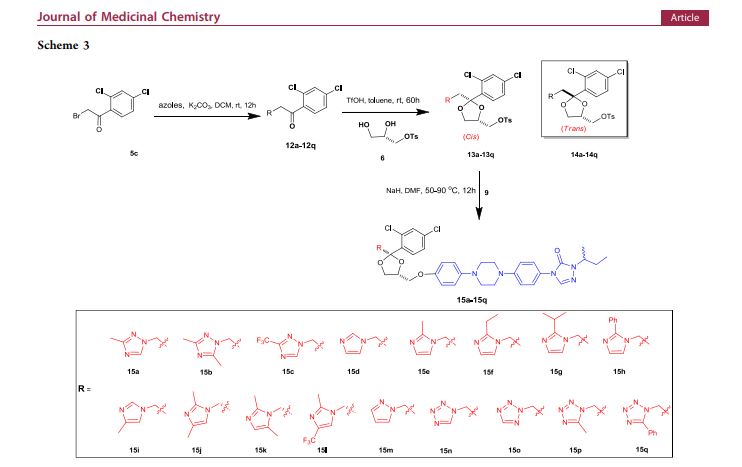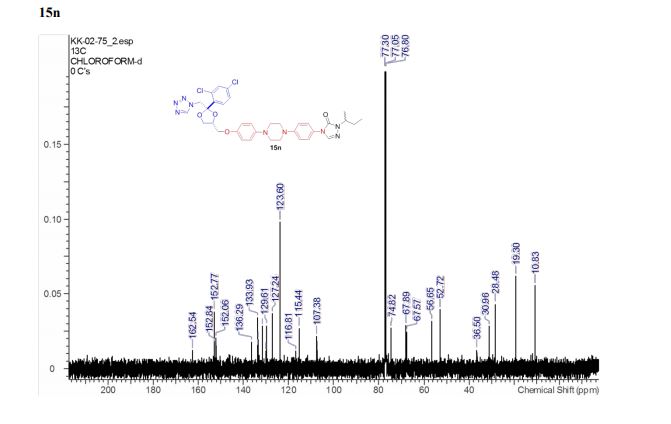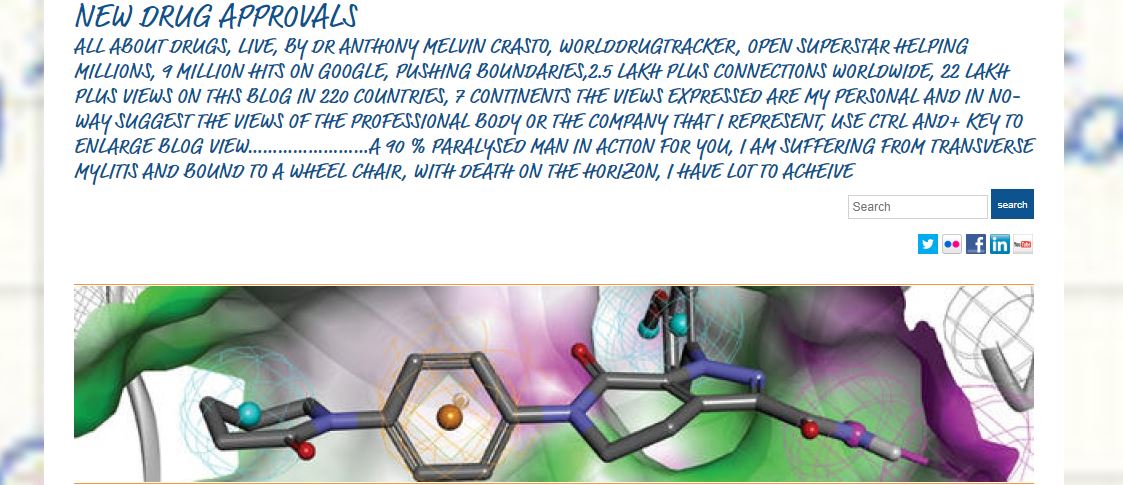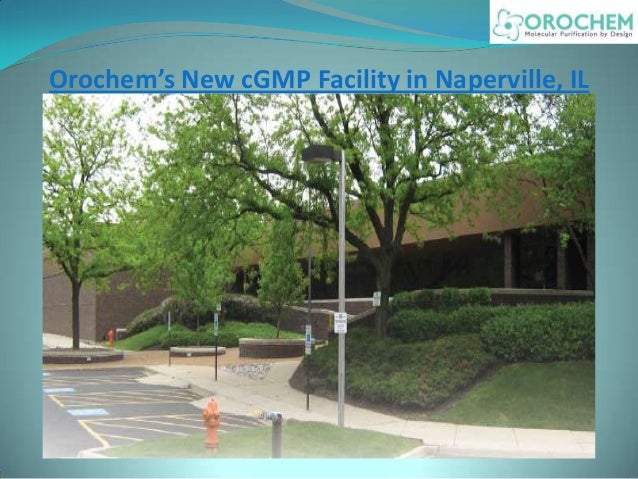An efficient synthetic approach for the synthesis of α-pyrones via Baeyer–Villiger-type oxidation of α-iodocyclopentenones through a catalyst- and additive-free system using air as an environmentally benign oxidant is described. The reaction exhibits excellent functional group compatibility and provides a simple and efficient protocol for the construction of highly functionalized α-pyrones under mild reaction conditions.
EP Patent Validation Service
EP Patent Validation Service
Sandeep Mishra
Director at De Science Infoware Pvt Ltd
Traditional route
The conventional route for EP patent validation is for the client to instruct their EP attorneys to execute the validation. The EP attorneys would then instruct a validations provider (like us) or perform the validations themselves using attorney partners in each country who they use based on a reciprocity model, which is usually not cost or quality selective. The EP attorneys would add significant fees for each country.
About our EP Patent Validation service : Why you should go with us.
Benefits of using our EP validation service :
By using a centralised validations provider like us, the client is cutting out one extra layer of cost, which is usually the most significant cost layer. All large patent filers in Europe use a centralised provider like our associate company because of benefits like the following:
Reduced Risk
We with our European team are specialists in European Patent Validation, which means there is a significantly reduced risk of misunderstanding, unexpected costs, or of course the unthinkable risk of accidental loss of a patent due to the complex and constantly changing regulations around Europe.
Reduced Cost
Validation is a significant part of the cost of a European Patent lifecycle, especially if many countries are required. Filing tens of thousands of validations per year, and translating millions of words into every language, means that ours buying power is enormous. We provide user-friendly and extremely efficient processes to our agents and suppliers which further reduce their costs, and all of this means we are able to pass on these savings to our customers.
We expect to able to reduce most client’s validations costs by at least 50%
Sandeep Mishra
Director at De Science Infoware Pvt Ltd
///////////Sandeep Mishra, Director, e Science Infoware, ep, patent
Engineering of a fungal laccase to develop a robust, versatile and highly-expressed biocatalyst for sustainable chemistry
Engineering of a fungal laccase to develop a robust, versatile and highly-expressed biocatalyst for sustainable chemistry
Abstract
Fungal laccases can play an important role as biocatalysts in organic chemistry to replace chemical synthesis. In a previous work we synthesized conductive polyaniline using a high-redox potential laccase from our collection of recombinant fungal variants. Still, the oxidation of aniline is hindered by the reaction conditions (low pH and presence of anionic surfactants). Thus, we tackle here the directed evolution of the enzyme asisted by computational simulation aiming at improving aniline oxidation at the required polymerization conditions while maintaining the enzyme´s substrate promiscuity. Simultaneously, its secretion by the host used for the engineering (Saccharomyces cerevisiae) was enhanced. Then, the improved laccase variant was overproduced in the industrial host Aspergillus oryzae and assayed for one‐pot synthesis of polyaniline and naphtol-derived dyes whose textile dyeing properties were verified in an industrial environment. Finally, modification of its C-terminal tail further enhanced laccase stability by flexibilization of the region. The resulting biocatalyst displays noticeable stability at high temperature and extreme pH while shows improved kcat values on the different substrates tested. Moreover, it is remarkably produced in S. cerevisiae at rates not formerly reported in the literature. These facts, together with the overexpression in A. oryzae opens new scenarios for its further development and application.
Enzyme production and purification Laccase was produced by S. cerevisiae 1 L-flask cultures and purified as described before.5 Laccase activity in the culture was measured spectrophotometrically with 3 mM ABTS in 100 mM citrate-phosphate buffer, pH 3 by the increase of Absorbance 418 nm (ε418 = 36000 M−1 cm−1). One activity unit (U) was defined as the amount of enzyme needed to transform 1 µmol substrate/minute. To estimate enzyme production, enzyme concentration of a purified laccase variant was measured by the A280 (Nanodrop 2000, Thermofisher, USA) and the specific activity (U/mg) was calculated and used to deduce the mg of enzyme/l obtained in the culture. Enzyme characterization All characterization assays were performed with purified enzymes.
////////
https://pubs.rsc.org/en/content/articlepdf/2019/gc/c9gc02475a
Design, synthesis and antimicrobial activity of usnic acid derivatives
Design, synthesis and antimicrobial activity of usnic acid derivatives
Abstract
Usnic acid, a dibenzofuran, was originally isolated from lichens producing secondary metabolites, and is well known as an antibiotic, but is also endowed with several other interesting properties. Thus, the goal of this paper is the design of new usnic acid derivatives and evaluation of their antimicrobial activity. All newly synthesized compounds possess good antibacterial activity with MIC ranging from 1.02–50.93 × 10−2 mmol mL−1 and MBC from 2.05–70.57 × 10−2 mmol mL−1. The most sensitive bacterial species was Staphylococcus aureus, while Pseudomonas aeruginosa and Escherichia coli were the most resistant among the ATCC strains, and MRSA was the most resistant among all tested bacteria (ATCC and clinical isolates). Their antifungal activity was very strong (MIC = 0.35–7.53 × 10−2 mmol mL−1 and MFC = 0.70–15.05 × 10−2 mmol mL−1) – better than those of reference compounds and usnic acid itself. The most sensitive fungal species was Trichoderma viride, while Penicillium versicolor var. cyclopium appeared to be the most resistant. It should be mentioned that in general most of the compounds showed weaker antibacterial activity, but better antifungal properties than usnic acid itself. The results allow us to conclude that the title compounds are good lead compounds for novel more active antibacterial drugs. On the other hand, these compounds are very promising as antifungals.
https://pubs.rsc.org/en/content/articlelanding/2018/md/c8md00076j#!divAbstract
////////////Usnic acid, dibenzofuran
Kalyan Kumar Pasunooti, Novel Tetrazole-Containing Analogues of Itraconazole as Potent Antiangiogenic Agents with Reduced Cytochrome P450 3A4 Inhibition

Itraconazole has been found to possess potent antiangiogenic activity, exhibiting promising antitumor activity in several human clinical studies. The wider use of itraconazole in the treatment of cancer, however, has been limited by its potent inhibition of the drug metabolizing enzyme cytochrome P450 3A4 (CYP3A4). In an effort to eliminate the CYP3A4 inhibition while retaining its antiangiogenic activity, we designed and synthesized a series of derivatives in which the 1,2,4-triazole ring is replaced with various azoles and nonazoles. Among these analogues, 15n with tetrazole in place of 1,2,4-triazole exhibited optimal inhibition of human umbilical vein endothelial cell proliferation with an IC50 of 73 nM without a significant effect on CYP3A4 (EC50 > 20 μM). Similar to itraconazole, 15n induced Niemann-Pick C phenotype (NPC phenotype) and blocked AMPK/mechanistic target of rapamycin signaling. These results suggest that 15n is a promising angiogenesis inhibitor that can be used in combination with most other known anticancer drugs.
Novel Tetrazole-Containing Analogues of Itraconazole as Potent Antiangiogenic Agents with Reduced Cytochrome P450 3A4 Inhibition
https://pubs.acs.org/doi/10.1021/acs.jmedchem.8b01252
■ ASSOCIATED CONTENT *S Supporting Information The Supporting Information is available free of charge on the ACS Publications website at DOI: 10.1021/acs.jmedchem.8b01252. Molecular formula strings (CSV) Detail of synthesis procedures; kinetic curve of CYP3A4 enzyme activities; philipin staining of compound 15c, 15g; competition assay of itraconazole photoaffinity probe; and NMR and HPLC chart of representative compounds (PDF)
■ AUTHOR INFORMATION Corresponding Author *E-mail: joliu@jhu.edu. Phone 410-955-4619. Fax 410-955- 4520. ORCID Wei Q. Shi: 0000-0001-5453-1753 Jun O. Liu: 0000-0003-3842-9841 Author Contributions § Y.L. and K.K.P. contributed equally to this work. Notes The authors declare no competing financial interest.
■ ACKNOWLEDGMENTS This work was supported by the National Cancer Institutes (grant R01CA184103) and the Flight Attendant Medical Research Institute
4-(4-(4-(4-(((2S,4R)-2-((1H-Tetrazol-1-yl)methyl)-2-(2,4-dichlorophenyl)-1,3-dioxolan-4-yl)methoxy)phenyl)piperazin-1-yl)phenyl)- 1-sec-butyl-1H-1,2,4-triazol-5(4H)-one (15n).
1 H NMR (500 MHz, CDCl3, δH): 8.46 (s, 1H), 7.61 (s, 1H), 7.55 (d, J = 8.5 Hz, 1H), 7.48 (d, J = 2.0 Hz, 1H), 7.43 (d, J = 9 Hz, 2H), 7.24 (dd, J = 8.5, 2.0 Hz, 1H), 7.03 (d, J = 9.0 Hz, 2H), 6.81 (d, J = 9.0 Hz, 2H), 5.36 (d, J = 14.0 Hz, 1H), 5.27 (d, J = 14.0 Hz, 1H), 4.38 (t, J = 5.0 Hz, 1H), 4.31−4.27 (m, 1H), 3.95 (dd, J = 8.5, 6.5 Hz, 1H), 3.88−3.83 (m, 2H), 3.53 (dd, J = 9.5, 6.5 Hz, 1H), 3.38 (br s, 4H), 3.26 (br s, 4H), 1.89−1.83 (m, 1H), 1.74−1.69 (m, 1H), 1.39 (d, J = 7.0 Hz, 3H), 0.90 (t, J = 7.5 Hz, 3H).
13C NMR (125 MHz, CDCl3, δC): 162.5, 152.8, 152.7, 152.0, 136.3, 133.9, 133.3, 131.5, 130.1, 129.6, 127.2, 123.6, 116.8, 115.4, 107.4, 74.8, 67.9, 67.6, 56.6, 52.7, 36.5, 31.0, 28.5, 19.2, 10.8.
HRMS (ESI) calcd for C34H37Cl2N9O4, 706.2424; found, 706.2425.
HPLC purity: 95.9%, tR = 10.5 min
-
Research Fellow at Nanyang Technological University, Singapore
-
Former Post-Doctoral Fellow at Johns Hopkins School of Medicine
-
Studied Physical organic chemistry at PG College of Science, Saifabad/Osmania University
-
Studied M.P.C at Government Junior College, Hanamkonda
-
Studied B.Sc. at Kakatiya Government Degree College
-
Went to Z. P. S. S. Geesugonda
READ
ANTHONY MELVIN CRASTO
 DRUG APPROVALS BY DR ANTHONY MELVIN CRASTO …..FOR BLOG HOME CLICK HERE
DRUG APPROVALS BY DR ANTHONY MELVIN CRASTO …..FOR BLOG HOME CLICK HERE
 amcrasto@gmail.com
amcrasto@gmail.com
CALL +919323115463 INDIA
//////////////
General Pharmacology
READ
ANTHONY MELVIN CRASTO
 DRUG APPROVALS BY DR ANTHONY MELVIN CRASTO …..FOR BLOG HOME CLICK HERE
DRUG APPROVALS BY DR ANTHONY MELVIN CRASTO …..FOR BLOG HOME CLICK HERE
 amcrasto@gmail.com
amcrasto@gmail.com
CALL +919323115463 INDIA
//////////////
Orochem Molecular Purification by Design

Established in 1996, Orochem Technologies Inc. started as a Biotech and Chromatography company to manufacture unique Sample Prep Technology “Products” for the Bioanalysis, Drug Discovery, and the Genomics and Proteomics markets.
Established in 1996, Orochem Technologies Inc. started as a Biotech and Chromatography company to manufacture unique Sample Prep Technology Products for the Bioanalysis, Drug Discovery, and the Genomics and Proteomics markets. Backed with unique expertise in high throughput formats, membranes and surface chemistries, Orochem was one of the first companies to translate the concept of pre-filters from single to high throughput formats, a concept now widely implemented for sample prep plates in the biotech and analytical markets. In the year 2001 Orochem manufactured the first commercially available Protein Crash and Precipitation 96-well plate for Bioanalytical processes. By the year 2006, with the acquisition of Column Engineering Inc, Orochem evolved to become a “full-service” provider for silica manufacturing utilized for analytical and preparatory chromatography. Orochem invests heavily into R&D in-house and owns strong intellectual property in stationary phases for achiral and Chiral Chromatography.
Orochem’s is globally recognized as an organization that conceives, develops, and installs some of the most technologically viable solutions for “highest purities” for industrial or “metric ton” scale purification for API’s, nutritional supplements, fatty acids, and specialty sugars. Orochem provides Simulated Moving Bed (SMB) Chromatography technology for the laboratory scale, pilot scale and large-scale purification of commercially viable molecules for its customers around the world. Orochem’s products and services for Simulated Moving Bed Chromatography include Synthesis and manufacture of stationary phases “tailored for specific separations”, a uniquely engineered SMB system and the installation and commissioning of the SMB systems at customer sites with well-trained Orochem technical service engineers.
Orochem owns several manufacturing facilities around the world. The Naperville, Illinois, USA site has about 84,000 square feet of manufacturing area where most of the Membrane Filter Plates, Silica manufacturing, Silica bonding, Solid Phase Extraction products and HPLC Columns are manufactured. Orochem India, Mumbai has 20,000 square feet facility and manufactures Sample prep products for the Discovery & Clinical Research organizations in Asia. Simulated Moving Bed chromatography systems are designed, built and assembled completely at our US locations in Naperville in Illinois.
USA (HQ)
Orochem Technologies Inc.
630 210 8300
630 210 8315
info@orochem.com
340 Shuman Blvd., Naperville, 60563, IL.
Orochem Molecular Purification by Design
https://orochem.com/
Latest artificial glucose-binding receptor is best yet
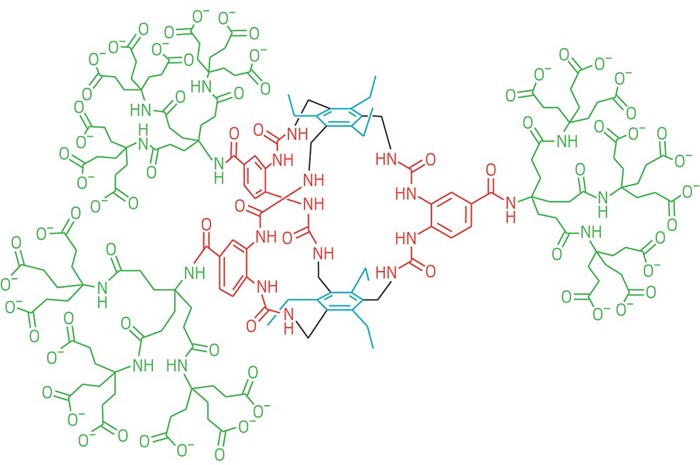
It’s a receptor that binds glucose strongly and with the highest selectivity yet. Could help with #diabetes treatment: http://ow.ly/EPzn30mDYjf
Read all at
Carbanio – a digital B2B platform to buy and sell Chemicals in India
I have an exciting news which I want to share today.
Couple of days ago, I was browsing on the internet to see if we can buy ready stock of Chemicals online, especially from Indian Suppliers.
I was surprised to see that there is one stunning B2B Marketplace which is specially meant for ready stock of Chemicals in India.
Carbanio (www.carbanio.com) is showing promising future for all Indian Suppliers which helps them not only buy Chemicals within India, but also to Sell Chemicals. They are no registration charges and no charges to publish Chemical products. Hope they are going to launch internationally very soon which will boost exports from India.
This is really a great news for everyone who would like to generate more revenue by selling online. Online sales will not only help you in increasing revenue, but also will enable you to do business 24*7. In addition, you will also receive new requirements from their Buyers which will help you in scaling your business and portfolio.
To know more about the selling benefits, visit https://www.carbanio.com/sell-on-carbanio
Those who wish to buy, the biggest benefit of this platform is you can buy ready stock and get it delivered at your doorstep with assured Purity and Quality. I see there are huge discounts offered by their registered Sellers, which will be a cost benefit factor.
Another plus point in this site is, you can post your Chemical requirements in case if that is not available on the platform, they will help you in sourcing it for you!

To know more about the buying benefits, visit https://www.carbanio.com/buyer
For free registration, please visit https://www.carbanio.com/register
In case if you still want to know more, you can get in touch with them via businesssupport@carbanio.com
Ayesha MD
API, Impurities and Regulatory aspects

The control of pharmaceutical impurities is currently a critical issue to the pharmaceutical industry. Structure elucidation of pharmaceutical impurities is an important part of the drug product development process. Impurities can have unwanted pharmacological or toxicological effects that seriously impact product quality and patient safety. Potential sources and mechanisms of impurity formation are discussed for both drugs. The International Conference on Harmonization (ICH) has formulated a workable guideline regarding the control of impurities. In this review, a description of different types and origins of impurities in relation to ICH guidelines and, degradation routes, including specific examples, are presented. The article further discusses measures regarding the control of impurities in pharmaceuticals substance and drug product applications.
Impurities in pharmaceuticals are the unwanted chemicals that remain with the active pharmaceutical ingredients (APIs), or develop during formulation, or upon aging of both API and formulated APIs to medicines. The presence of these unwanted chemicals even in small amounts may influence the efficacy and safety of the pharmaceutical products.
According to ICH, an impurity in a drug substance is defined as-“any component of the new drug substance that is not the chemical entity defined as the new drug substance”. There is an ever increasing interest in impurities present in APIs recently, not only purity profile but also impurity profile has become essential as per various regulatory requirements. The presence of the unwanted chemicals, even in small amount, may influence the efficacy and safety of the pharmaceutical products.
“In the pharmaceutical world, an impurity is considered as any other organic material, besides the drug substance, or ingredients, arise out of synthesis or unwanted chemicals that remains with API’s”
The control of pharmaceutical impurities is currently a critical issue to the pharmaceutical industry. The International Conference on Harmonization (ICH) has formulated a workable guideline regarding the control of impurities.
CLASSIFICATIONS OF IMPURITIES:
Impurities have been named differently or classified as per the ICH guidelines as follows:
A] Common names
1. By-products
2. Degradation products
3. Interaction products
4. Intermediates
5. Penultimate intermediates
6. Related products
7. Transformation products
B] United State Pharmacopeia
The United States Pharmacopoeia (USP) classifies impurities in various sections:
1. Impurities in Official Articles
2. Ordinary Impurities
3. Organic Volatile Impurities
C] ICH Terminology
According to ICH guidelines, impurities in the drug substance produced by chemical synthesis can broadly be classified into following three categories –
1. Organic Impurities (Process and Drug related)
2. Inorganic Impurities
3. Residual Solvents
Organic impurities may arise during the manufacturing process and or storage of the drug substance may be identified or unidentified, volatile or non-volatile, and may include
1. Starting materials or intermediates
2. By-products
3. Degradation products
Impurities are found in API’s unless, a proper care is taken in every step involved throughout the multi-step synthesis for example; in paracetamol bulk, there is a limit test for p-aminophenol, which could be a starting material for one manufacturer or be an intermediate for the others. Impurities can also be formed by degradation of the end product during manufacturing of the bulk drugs.
The degradation of penicillin and cephalosporin are well-known examples of degradation products. The presence of a β-lactam ring as well as that of an a-amino in the C6 or C7 side chain plays a critical role in their degradation.
- 2. Patil, G. D.; Kshirsagar, S. W.; Shinde, S. B.; Patil, P. S.; Deshpande, M. S.; Chaudhari, A. T.; Sonawane, S. P.; Maikap, G. C.; Gurjar, M. K.Identification, Synthesis, and Strategy For Minimization of Potential Impurities Observed In Raltegravir Potassium Drug Substance. Org. Process Res. Dev. 2012, 16, 1422– 1429, DOI: 10.1021/op300077m
- 3. Huang, Y.; Ye, Q.; Guo, Z.; Palaniswamy, V. A.; Grosso, J. A. Identification of Critical Process Impurities and Their Impact on Process Research and Development. Org. Process Res. Dev.2008, 12, 632– 636, DOI: 10.1021/op800067v
4. ICH Harmonised Tripartite Guideline Q3A(R): Impurities in New Drug Substances; International Conference on Harmonization: Geneva, 2002.
5. Mishra, B.; Thakur, A.; Mahata, P. P. Pharmaceutical Impurities: A Review. Int. J. Pharm. Chem.2015, 5 (7), 232– 239
6 International Conference on Harmonisation (ICH) Guidelines; Q8, Pharmaceutical Development, 2005; Q9, Quality Risk Management, 2006.
7 Ganzer, W. R.; Materna, J. A.; Mitchell, M. B.; Wall, L. K. Pharm. Technol. 2005, July 2) 1–12.
8 Nasr, M. Drug Information Association Annual Meeting, Philadelphia, PA, June 19, 2006; Pharmaceutical Quality Assessment System (PQAS) in the 21st Century, 2006.
/////














